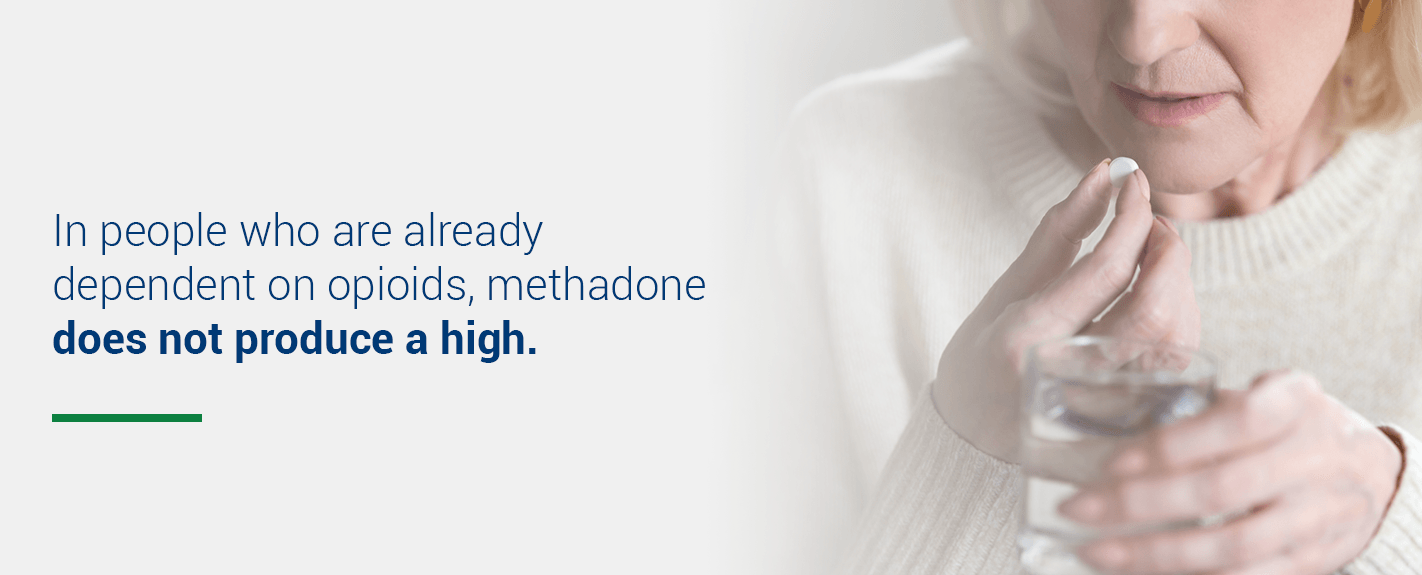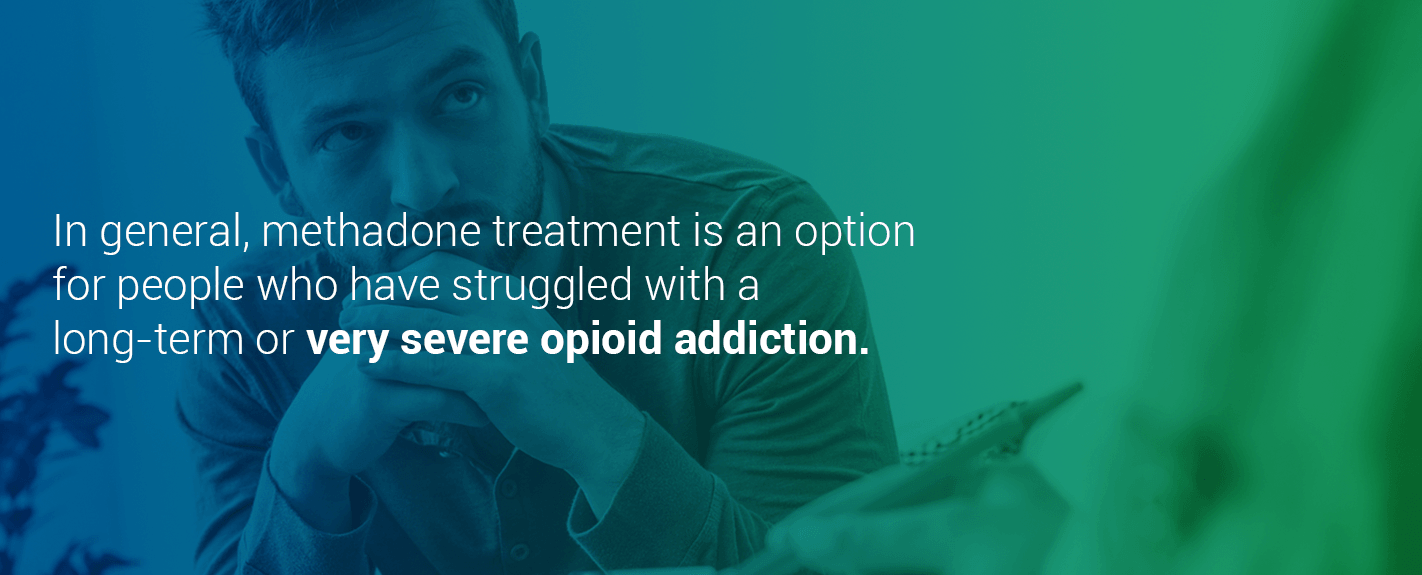COVID-19 Update
Health Care Resource Centers continues to serve patients in accordance with CDC, Federal and State Guidelines, putting the health and…
Where change begins.
The opioid crisis continues to destroy lives in the United States, and few people receive the treatment they need to overcome addiction. Part of this issue is a lack of public understanding of what forms of treatment are available and effective. Methadone maintenance treatment (MMT) is a form of medication-assisted treatment (MAT) that offers people a path to recovery from opioid addiction. We’ll go over everything you need to know to make a confident, informed decision about MMT.
Methadone maintenance is a form of treatment that involves taking the medication methadone daily for an extended period. Methadone is a prescription medication that helps minimize the symptoms of opioid withdrawal, allowing people to engage with their treatment more fully.
The chemical structure of methadone was uncovered in the 1930s by a team of German scientists. They were trying to develop a painkiller that had less addictive potential than morphine. The development of methadone as a treatment drug started in the 1960s when heroin addiction began to resurge. At this point, researchers pinpointed methadone as a medication that was effective in reducing drug cravings and withdrawal. In 1971, federal regulations were developed to regulate the use of methadone in addiction treatment. It has been used successfully since then to treat opioid addiction.
MAT with methadone or another treatment medication has proven to be highly effective. Treatment outcomes are better for those who participate in an MAT program than for those who receive either behavioral intervention or medication alone. MAT reduces illicit opioid abuse and reduces overdose fatalities while helping to provide a foundation for lasting recovery.

Methadone is a synthetic opioid agonist. It binds to the same opioid receptors in the brain as other opioids like prescription painkillers and heroin. Although it occupies and interacts with the same receptors, it lasts in the systems much longer than opioids of abuse. In people who are already dependent on opioids, methadone does not produce a high at a therapeutic dose. Instead, it produces a low-intensity, consistent opioid effect that satisfies the brain’s need for opioids without the euphoria. This mechanism prevents the brain from triggering the painful withdrawal symptoms that so often cause people to relapse.
Withdrawal occurs when someone abruptly stops or dramatically reduces their intake of opioids. Chronic opioid use leads to changes in the brain over time. Once the brain has chemically adapted to the frequent presence of opioids, it can’t adjust its function quickly enough to keep from experiencing withdrawal when the drugs are removed. This leads to a series of physiological reactions, producing serious symptoms such as:
These symptoms typically start occurring in the first 12 hours after stopping the use of a short-acting opioid like heroin. The longer the action window of the opioid used, the longer it will take for withdrawal to set in and the longer the symptoms will last.
Treatment with methadone allows the individual to stop using the opioid of abuse without having to go through the worst of these symptoms. Methadone essentially tricks the brain out of beginning withdrawal, while allowing the person to feel normal enough to participate in everyday life.
MAT with methadone typically takes place in three different phases.
The first thing that happens is an intake appointment in which the program participant undergoes a physical examination and talks with a counselor or therapist to determine treatment goals. The doctor will prescribe an initial dose of methadone to see how it affects the individual. The initial dose is based on factors like height and weight along with the person’s reported history of drug abuse and the results of a drug test. The ideal dosage should relieve any withdrawal symptoms, and keep the person relatively comfortable for 24 to 36 hours.
The stabilization phase revolves around getting the person on track for recovery. Counselors work to engage the individual and monitor how they feel during induction and the following weeks of treatment. Participants learn crucial coping tools that will allow them to deal healthily with stress that may occur in the daily activities of work, school and socialization. This phase is critical to continued success in recovery, and if the treatment program does not provide enough support and resources, the chances of success are diminished.
Once a person has become stabilized on an effective daily dose of methadone and is demonstrating continued sobriety, they are considered to be in the maintenance phase. Methadone maintenance simply refers to the fact that a person is maintaining their recovery through the continued administration of the medication. The minimum recommended length of methadone maintenance treatment is 12 months. However, many people find that they don’t want to disrupt the stability they achieve during MMT and continue treatment for many years. The decision to taper off of methadone is one that can only be made in consultation with a physician, and any tapering should occur very slowly for the greatest success.
We know that MMT works better than other forms of treatment, but what are the advantages that make it so effective?
One of the advantages afforded by methadone is the structure of an MMT program. Participants must attend a methadone clinic each day to receive their medication, and the medication is given under supervision. This program structure demands accountability, which helps people stay in treatment longer.
Studies that compare flexible dosing of methadone and buprenorphine show that buprenorphine is less effective in retaining people in treatment. This may be because buprenorphine treatment typically requires less visits.
Compared to other forms of treatment, MMT is relatively affordable. Daily medication fees may be covered by insurance, and people without coverage may qualify for special programs or grants to cover the costs. In comparison to the cost of maintaining a drug addiction, methadone is highly cost-effective. Eliminating the cost of drugs of abuse as well as minimizing the medical costs associated with opioid addiction saves individuals money in the long run.
Methadone maintenance programs are required to provide patients with counseling services. These services help participants:
In addition to individual counseling, quality programs offer group counseling. Sharing experiences and successes with people who understand the challenges of recovery can help participants feel supported and can help build a network for ongoing support throughout the process. Participants also receive medical support in the form of monitoring by the prescribing physician.
One of the drawbacks of buprenorphine, the other most popular MAT medication, is its “ceiling effect.” This term refers to the fact that after a certain point, taking more of the medication will not increase its effects. The ceiling effect has the benefit of reducing the chance of abuse, but it makes the medication less suitable for those who have a very severe dependence on opioids.
Methadone fully activates opioid receptors with no such ceiling effect. This makes it suitable for managing withdrawal even when the person in question has an extremely high level of tolerance. Tolerance can build up quickly with heavy use of opioids within a short period, or it can build up over a long period of less opioid usage.
Many pregnant women who are dependent on opioids worry that treatment with methadone will harm the baby. It’s important to keep things in perspective and realize that treatment with methadone poses significantly less danger to the baby than either continuing to abuse opioids or attempting to detox cold-turkey. Continued use of opioids during pregnancy can lead to:
If a woman suddenly discontinues opioid use altogether, the baby will likely experience neonatal abstinence syndrome (NAS) at birth. This group of conditions includes:
Treatment with methadone has very little chance of harming the baby and is considered the best form of treatment for pregnant women by the American College of Obstetricians and Gynecologists (ACOG).

Not everyone qualifies for MMT programs. Participants must meet certain state and federal requirements. For one, patients must be over the age of 18 in almost all cases. Methadone’s effect on growing brains has not been rigorously studied, and other treatments are generally used whenever possible. Minors can achieve MMT eligibility by providing:
People at or above the age of majority must be physically dependent on opioids at the time of application for treatment. They must also have at least one year of history struggling with opioid addiction before applying for treatment. To prove a year of opioid addiction, prospective patients can provide a physician’s letter or records of treatment received in the past. If these options are not available, a family member may write a confirmation of the individual’s opioid use and have it notarized. In situations where family certification is impossible or undesirable, a member of the clergy may provide the letter.
There are some exemptions from the one-year rule. If an applicant is pregnant or has been released from prison in the past six months, they can have the one-year rule waived. Additionally, those who have previously participated in methadone maintenance treatment can skip this requirement.
In general, methadone treatment is an option for people who have struggled with a long-term or very severe opioid addiction. Other treatment options are usually the first course of action, and MMT becomes an option when others have not been effective in stopping opioid abuse.
Methadone maintenance is a good solution for people who cannot afford residential treatment programs or for whom those programs have failed in the past. Because it is an outpatient form of treatment, people can schedule clinic and counseling attendance around their other responsibilities and activities. Methadone allows people to keep working, going to school or parenting while they work on their recovery.
Many people have further questions about methadone maintenance treatment. These are five of the most common inquiries about MMT.
A: No. Methadone maintenance is medically-supervised and reduces or eliminates the hallmark behaviors of addiction, such as impulsive drug-seeking behavior and other forms of poor decision making.
A: Potentially. It is possible to experience constipation, drowsiness, sweating and changes in libido. However, these symptoms are generally mild and recede over time once the appropriate dose is found. Crucially, any side effects resulting from methadone are negligible compared to the painful symptoms of opioid withdrawal.
A: Methadone will not create a positive result in regular tests for opioids. To detect methadone, a specific type of drug test is needed and it is not common practice for employers or other organizations to test for methadone.
A: It is recommended that you remain in your MMT program for at least a year, and most people continue on MMT for months or years after that. You should stay on methadone as long as it benefits you, and don’t try to stop taking it without close consultation with your treatment provider.
A: Yes. Counseling is a required component in MMT, due to its central role in rehabilitation. Without individual or group counseling, you will not learn the tools and strategies necessary to change your behavior toward opioids.
If you are struggling with opioid addiction, time is of the essence. The sooner you seek MMT, the sooner you can begin your journey toward a life free from substance abuse. Health Care Resource Centers has been offering methadone treatment programs for more than 25 years. In addition to MAT and counseling, HCRC provides patients with case management and referrals to community resources to support their recovery.
To learn more about the specifics of MMT at HCRC, pick up the phone and call us at (866) 758-7769 to speak to one of our representatives. You can also direct your questions to our online contact form. Don’t hesitate to get in touch. HCRC is here to help guide you to lasting recovery.